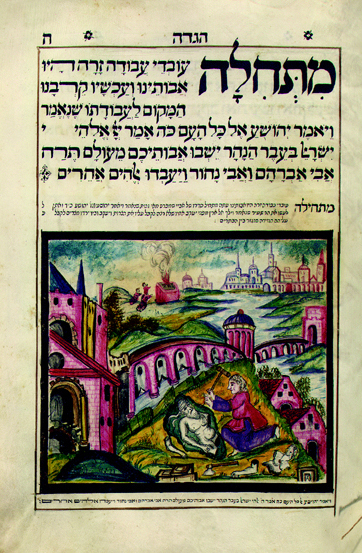Image Details

Klau Library, Cincinnati, Hebrew Union College—Jewish Institute of Religion
“From the beginning (Mit-chilah), our ancestors were idol worshipers,” reads the Hebrew prayer (shown here) inscribed on this page from a Haggadah (Passover prayerbook) produced in Germany in 1741. Every Haggadah includes the same text, a reminder of those formative years of Judaism when, according to tradition, Abraham’s family still worshiped idols. The Mishnah, a compilation of Jewish law from the third century A.D., instructs that when narrating the Passover story one must begin with “shame” and end with “praise”—hence the inclusion of the Mit-chilah portion. But in this parchment manuscript at least, the reminder of idol worship and its wrongs is countered by the image of Abraham kneeling on a hillside, proudly using his hammer to destroy the town’s idols, carved by his own father, Terah. According to the early postbiblical writers, explains our author, it is because of Abraham’s bravery and willingness to do this in the face of opposition from family and neighbors, and because of his understanding and recognition of one God, that he was chosen.
